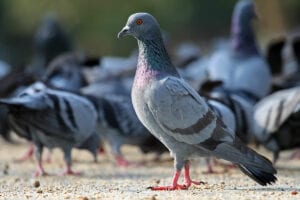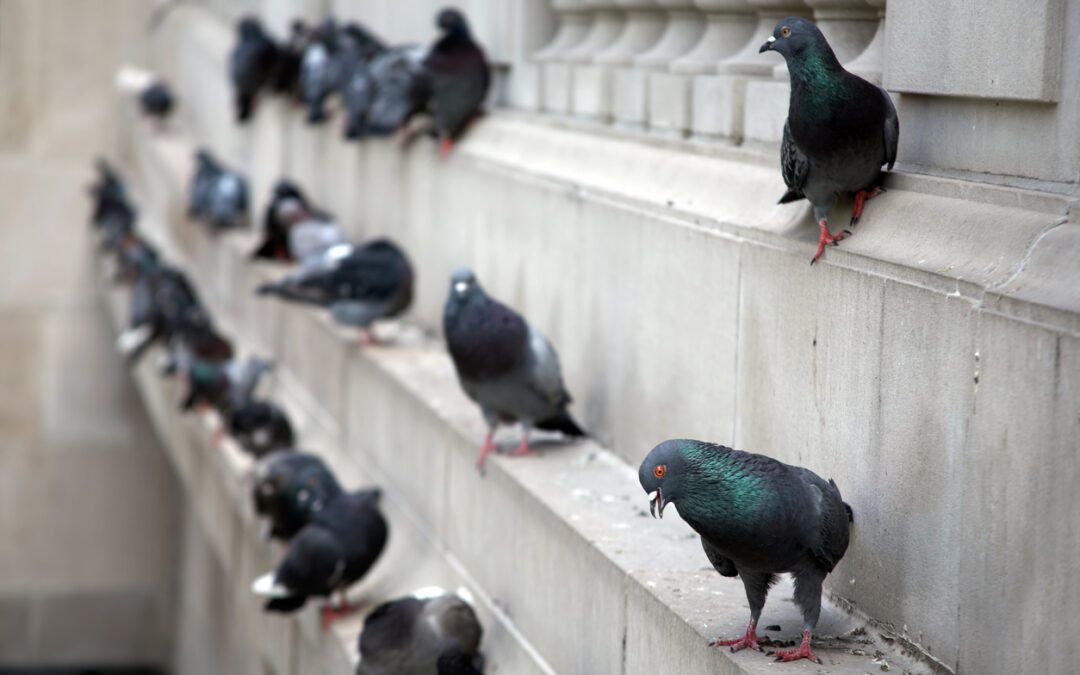
by Pigeon Patrol | Oct 15, 2024 | Bird Netting, Pigeon Droppings, Pigeon Patrol's Services, Pigeon Predators
More than 20 years ago, after a boozy bachelor party, three of us were walking across the small park at the intersection of State and Rush Streets. This, like many other parks large and small, is a place where pigeons congregate. Without a word of warning or “Hey, watch this,” the bachelor took a couple of quick steps and kicked an unsuspecting pigeon into the air. I saw the pigeon land with a thud 20 feet away but before I could say to the bachelor, “Why’d you kill that pigeon?” I watched in amazement as the pigeon shook its little head, got up on its skinny legs and went about its business. And I thought, “What a tough little bird.”
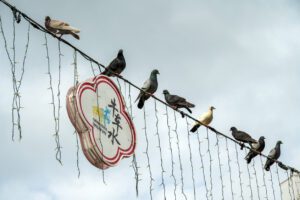
I didn’t give pigeons more thought until a few weeks ago when artist Tony Fitzpatrick–whose previous subjects in the Magazine have included fighting dogs, boxers, snakes and flowers–showed me his pigeon pictures. Here they are on this page and in my head’s a question: What do pigeons deserve? To be pitied, praised or punted?
There is no doubt that pigeons are the most urban of birds, the avian equivalent of squirrels or traffic jams; facts of city living to be either tolerated or complained about.
But listening to Megan Ross, curator of birds at Lincoln Park Zoo, talk about pigeons is to gain a new appreciation of them. “The species does get a bad rap,” she says. “But it is a fascinating species, if one takes the time to look.”
She points out that there are some 300 species of pigeons and doves. “What we commonly refer to in Chicago as a pigeon is actually a rock dove,” she says. Look closely and you will see that a pigeon is not just a dull gray mass, but a bird of 10,000 feathers, some of them bronze, pink, white and green. (Seriously, just take a look.) Watch them fly and you will also see what Ross describes as “fun flight patterns.” And, she adds, “They also have a nice courtship display.”
As well they should, since pigeons, it may surprise you to know, mate for life. Not only that, but male pigeons have the ability to lactate, producing milk for the babies just as females do.
Admittedly, when pigeons gather in groups, as they mostly seem to, they can exude the quiet menace of a gang. One almost expects to see some of them smoking cigarettes or spitting on the sidewalk.
“Rock doves are very docile birds,” says Ross. “They gather in groups not to intimidate people but as a protection against predators, such as falcons or raccoons. There is a certain safety in numbers.”
But their most common and persistent enemy is us. Besides various eradication efforts designed to limit their numbers, pigeons face determined campaigns by businesses to chase them away. Some even install fake owls on building ledges or set up loudspeakers that periodically emit terrible screeching, hawklike sounds in outdoor parking lots in an attempt to keep the CEO’s Jaguar clean.
“Many people are turned off by the fact that the birds poop,” says Ross.
This was not always the case. That people are turned off, I mean. In the 18th Century, King George I of England decreed all pigeon droppings to be property of the Crown. He even put guards at sites where the birds perched to enforce his edict. He was no birdbrain. There was a practical reason for his order: Pigeon manure was used in making gunpowder.
But if the birds have thus unknowingly contributed to the taking of lives, they have also done their bit to save them. With the ability to beat their wings up to 10 times a second, maintain a heart rate of 600 beats per minute for up to 16 hours without rest and fly as fast as 60 m.p.h., pigeons are the extreme athletes of the air.
In World War I, a homing pigeon named “Cher Ami” finished his distinguished career by delivering, while wounded, a vital message: the location of the famous “Lost Battalion,” thereby saving some 200 human lives. In WWII, a homing pigeon named “GI Joe” saved more than 1,000 allied soldiers’ lives in a single mission.
Who knows if Chicago pigeons would be up to such valorous deeds? But they are tough characters.
They do not migrate, as do more sensible species, and take the full brunt of Chicago winters. Unlike the rest of us, they do not whine about the wind chill. They seem capable of eating almost anything, from popcorn in the parks to abandoned pizza slices, old hamburger buns to cotton candy. “They have, shall we say, a hearty digestive system,” says Ross.
They don’t seem to be at all insecure about their looks, though people vastly prefer spunky sparrows.
They appear to be fearless, not only when confronted by the attacks from businesses but from individuals. Many little kids like to chase them. Older kids try to hit them with rocks or kick them. Some adults hunt and kill them for food. Though we were unable to catch any of these folks in the act of hunting, cooking or eating, the Internet is filled with recipes for pigeon.
All this, and pigeons can still live to be more than 30 years old.
It’s so easy to take everyday things for granted. When was the last time you watched a river or stream flow, looked up at a building’s decorative elements, scooped up a handful of sand or dirt or asked the name of your local Streetwise vendor?
So, why not give pigeons another look? Start with the ones fashioned by Fitzpatrick and then move on to the real things, to the resilient birds with which you share the sidewalks and park benches.
Pigeon Patrol Products & Services is the leading manufacturer and distributor of bird deterrent (control) products in Canada. Pigeon Patrol products have solved pest bird problems in industrial, commercial, and residential settings since 2000, by using safe and humane bird deterrents with only bird and animal -friendly solutions. At Pigeon Patrol, we manufacture and offer a variety of bird deterrents, ranging from Ultra-flex Bird Spikes with UV protection, Bird Netting, 4-S Bird Gel and the best Ultrasonic and audible sound devices on the market today.
Canada’s top wholesaler for bird deterrent products for twelve consecutive years.
Contact us at 1- 877– 4– NO-BIRD, (604) 585-9279 or visit our website at https://www.pigeonpatrol.ca/
Bird Gone, Pigeon Gone, Pigeon problems, pigeon spikes, 1-877-4NO-BIRD, 4-S Gel, Bird Control, Pigeon Control, bird repellent, Bird Spikes, sonic bird repellent, stainless steel bird spikes, bird spikes Vancouver, Ultra Sonic Bird Control, Bird Netting, Plastic Bird Spikes, Canada bird spike deterrents, Pigeon Pests, B Gone Pigeon, Pigeon Patrol, pest controller, pest control operator, pest control technician, Pigeon Control Products, humane pigeon spikes, pigeon deterrents, pigeon traps, Pigeon repellents, Sound & Laser Deterrents, wildlife control, raccoon, skunk, squirrel deterrent, De-Fence Spikes, Dragons Den, Pigeon, Pigeon Patrol, Pigeons Roosting, Vancouver Pigeon Control, Bird Spikes, Bird Control, Bird Deterrent, Pigeon Deterrent, Surrey Pigeon Control, Pest, Seagull deterrent Vancouver Pigeon Blog, Birds Inside Home De-fence, Pigeon Nesting, Bird Droppings, Pigeon Dropping, woodpecker control, Keep The Birds Away, Birds/rats, seagull, pigeon, woodpecker, dove, sparrow, pidgeon control, pidgeon problem, pidgeon control, flying rats, pigeon Problems, bird netting, bird gel, bird spray, bird nails, bird guard, Pigeon control, Bird deterrents, Pigeon deterrents, Bird control, solutions, Pigeon prevention, Pigeon repellent, Bird proofing, Pest bird management, Pigeon spikes, Bird netting, Humane bird control, Bird exclusion, Urban bird control, Anti-roosting devices, Pigeon removal, Bird barriers
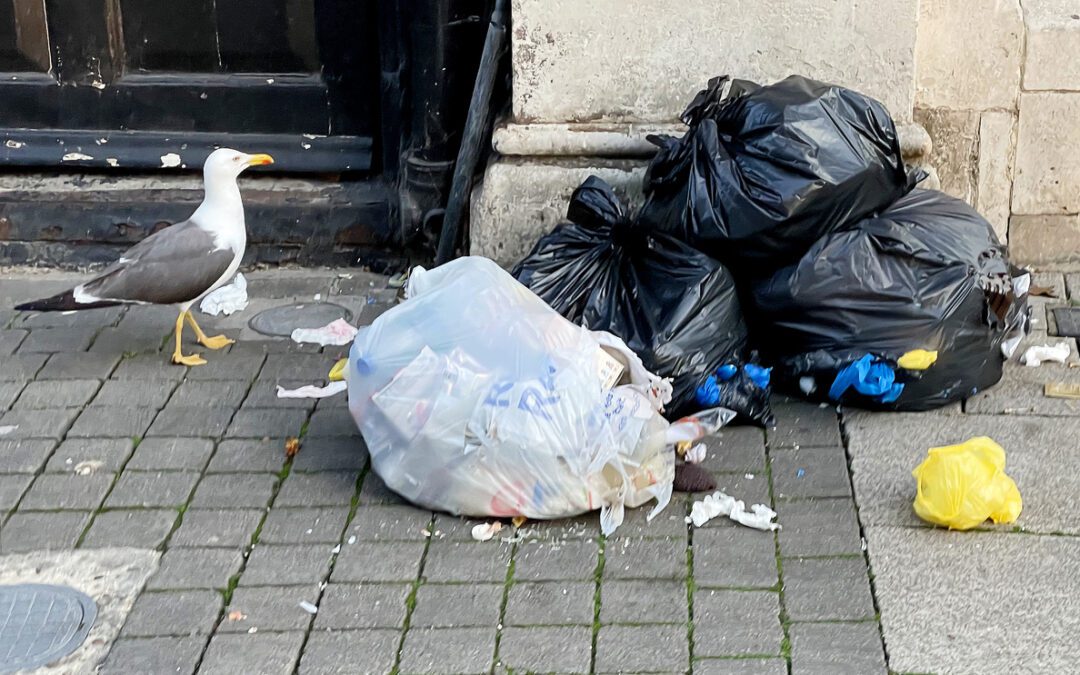
by Pigeon Patrol | Sep 25, 2024 | Bird Netting, Pigeon Control, Pigeon Droppings, Pigeon Patrol's Services
Fires were caused by a mouse chewing wires, a toilet roll being microwaved and a pigeon with a cigarette
A pigeon dropping a discarded cigarette down a chimney was among the most unusual causes of London fires in 2013, the city’s fire brigade has revealed.
Researchers studied 2,000 incidents in the capital in a bid to highlight the importance of fire safety.
Another case saw a fire caused by a dog hitting a toaster’s controls as it leapt on a worktop to reach food
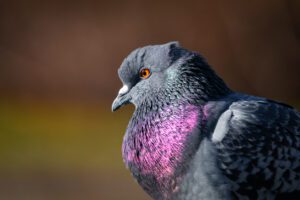
Close-up of a Pigeon at a Vancouver Island park.
.
London Fire Brigade (LFB) investigator Charlie Pugsley said he had seen some “weird and wonderful” things this year.
He added that even the strangest fire could have been prevented by taking simple fire safety precautions.
Other cases which highlighted the more unusual causes of fire included a teenage boy lighting a can of deodorant he had just used on himself ahead of his first date.
The LFB also attended fires started by someone putting a toilet roll which dropped down the loo into a microwave to dry it out and by a mouse eating through the wiring in the back of a fridge freezer.
Mr Pugsley said people should not use microwaves to dry out clothes or other items.
He added that candles should not be left unattended and mirrors and glass, which reflect the sun’s rays, needed to be kept away from flammable objects.
Pigeon Patrol
Pigeon Patrol Products & Services is the leading manufacturer and distributor of bird deterrent (control) products in Canada. Pigeon Patrol products have solved pest bird problems in industrial, commercial, and residential settings since 2000, by using safe and humane bird deterrents with only bird and animal -friendly solutions. At Pigeon Patrol, we manufacture and offer a variety of bird deterrents, ranging from Ultra-flex Bird Spikes with UV protection, Bird Netting, 4-S Bird Gel and the best Ultrasonic and audible sound devices on the market today.
Canada’s top wholesaler for bird deterrent products for twelve consecutive years.
Contact us at 1- 877– 4– NO-BIRD, (604) 585-9279 or visit our website at https://www.pigeonpatrol.ca/
Bird Gone, Pigeon Gone, Pigeon problems, pigeon spikes, 1-877-4NO-BIRD, 4-S Gel, Bird Control, Pigeon Control, bird repellent, Bird Spikes, sonic bird repellent, stainless steel bird spikes, bird spikes Vancouver, Ultra Sonic Bird Control, Bird Netting, Plastic Bird Spikes, Canada bird spike deterrents, Pigeon Pests, B Gone Pigeon, Pigeon Patrol, pest controller, pest control operator, pest control technician, Pigeon Control Products, humane pigeon spikes, pigeon deterrents, pigeon traps, Pigeon repellents, Sound & Laser Deterrents, wildlife control, raccoon, skunk, squirrel deterrent, De-Fence Spikes, Dragons Den, Pigeon, Pigeon Patrol, Pigeons Roosting, Vancouver Pigeon Control, Bird Spikes, Bird Control, Bird Deterrent, Pigeon Deterrent, Surrey Pigeon Control, Pest, Seagull deterrent Vancouver Pigeon Blog, Birds Inside Home De-fence, Pigeon Nesting, Bird Droppings, Pigeon Dropping, woodpecker control, Keep The Birds Away, Birds/rats, seagull, pigeon, woodpecker, dove, sparrow, pidgeon control, pidgeon problem, pidgeon control, flying rats, pigeon Problems, bird netting, bird gel, bird spray, bird nails, bird guard, Pigeon control, Bird deterrents, Pigeon deterrents, Bird control, solutions, Pigeon prevention, Pigeon repellent, Bird proofing, Pest bird management, Pigeon spikes, Bird netting, Humane bird control, Bird exclusion, Urban bird control, Anti-roosting devices, Pigeon removal, Bird barriers
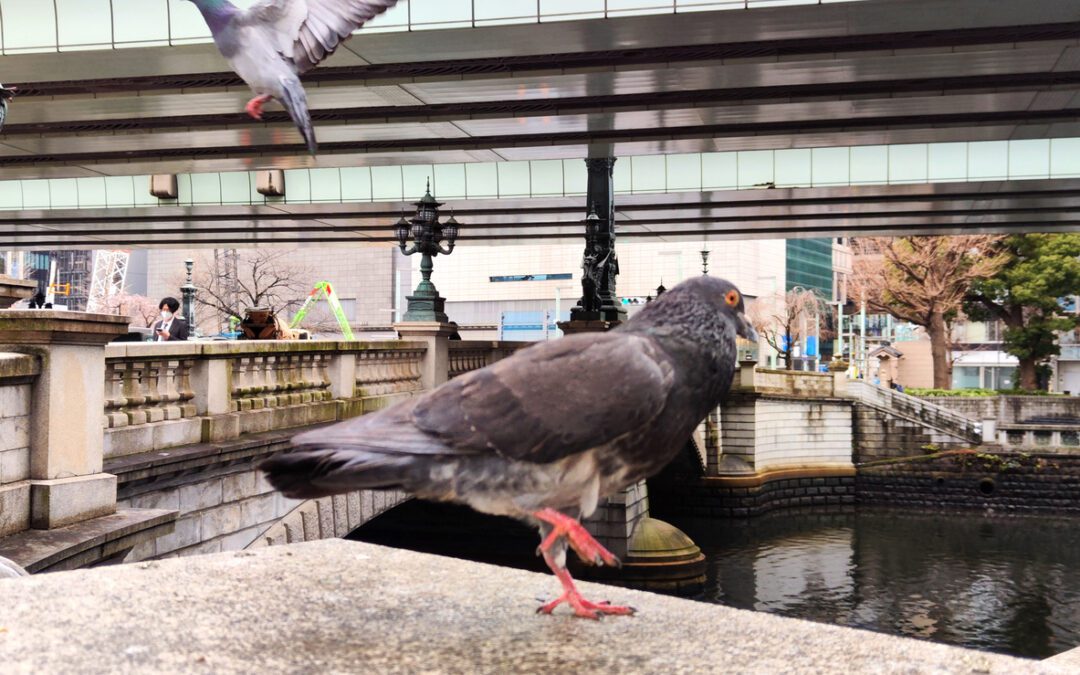
by Pigeon Patrol | Sep 25, 2024 | Bird Netting, Pigeon Droppings
From a pigeon’s perspective, city living can’t be beat. Food and water are readily available. Predators are rare. Plus, there’s plenty of free housing. Pigeons find our window ledges, rooftops, bridges, and warehouses to be ideal substitutes for the natural ledges in cliff sides that they have always used as roosting, nesting, and sheltering sites.
When flocks grow too large and become a nuisance, killing the birds is often the first plan of action. But killing pigeons doesn’t work, and there are better, non-lethal ways to fix a pigeon problem.
Three steps to humanely solve a pigeon problem
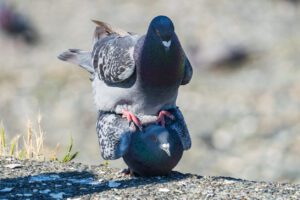
Pigeons mating and flirting with each other.
You may just need one or a combination of all three techniques, depending on the size of the pigeon population you’re dealing with.
Stop feeding the pigeons (intentionally or not)
Most conflicts with pigeons can be tied at one point or another to feeding, intentionally or otherwise.
Pigeons get fed plenty of handouts and garbage, but there are also well-intentioned pigeon lovers who regularly feed the birds. This does the pigeons more harm than good as the pigeons begin to gather in large numbers, often leading to inhumane and ineffective attempts to reduce their numbers.
When such troubles arise, the best thing for the birds is to reduce feeding gradually over several weeks. The flock will gradually disperse until the remaining number of birds matches what the area can naturally support.
Unintentional food sources
Even when not feeding on purpose, we humans are messy, leaving leftovers and dropped crumbs everywhere. Pigeons hang around town squares, public parks, and other trafficked areas to help themselves to what we leave behind, especially when convenient roosting and nesting sites are nearby. To discourage pigeons from gathering, food attractants need to be cleaned up regularly.
In suburban neighborhoods, too, homeowners may mistakenly feed pigeons or they may be providing food for pigeons inadvertently when feeding their backyard birds by tossing seed on the ground, rather than putting it in birdfeeders. To discourage pigeons visiting your yard, change the type, amount, and timing of feeding. If most of the pigeons fail to move elsewhere, you’ll need to stop feeding all birds for a couple weeks. (Don’t worry; the birds won’t starve.) When you resume feeding, only put out seed in birdfeeders and keep the ground below them cleaned up.
Prevent roosting and nesting
Pigeons look for flat surfaces for roosting and nesting. Encourage them to do these things elsewhere by making flat surfaces unavailable to them. With the correct application of the right product, roosting structures can be rendered virtually pigeon-free.
There are a variety of devices that can be used to change flat nesting spots into inaccessible spaces and prevent pigeons from roosting in areas where they’re not wanted. Attach wood or metal sheathing (Birdslides) at a 45- to 60-degree angle over window ledges and other flat surfaces to keep pigeons from landing.
Install “bird wires” to keep pigeons off ledges, railings, awnings, and rooftops.
Use netting to keep pigeons out of large areas.
NEVER use polybutylene gel. Sticky gel repellents made from polybutene can harm all birds and any animal that comes in contact with it. The HSUS strongly recommends that these dangerous repellents be avoided at all costs. The feathers of any bird who comes into contact with the dense, sticky gel will become damaged, interfering with their ability to fly and to stay water-proofed.
These gel repellents are not selective. Other birds are likely to land on the gel, get stuck, and die a slow death. The polybutene gels are particularly harmful to smaller species.
Limit flock size with pigeon birth control
As year-round nesters, a pair of pigeons can raise a dozen or more young each year. If pigeons have plenty of food and space, their numbers can quickly increase. Fortunately, a bird contraceptive is available that limits growth of pigeon flocks.
Ovocontrol bird food is “birth control” for pigeons. Innolytics, LLC
Known as OvoControl, pigeon contraception comes in the form of a kibble-type food, which causes birds who eat it regularly to lay eggs that fail to develop. In March 2010, OvoControl received landmark general-use approval by the Environmental Protection Agency. Visit ovocontrol.com to learn more about the product and how you can implement an OvoControl program.
Combined with exclusion and other humane measures to discourage roosting and nesting, OvoControl effectively reduces hatching rates in pigeons, thereby limiting flock sizes and diminishing problems associated with large numbers of pigeons.
Business owners who pledge to use OvoControl instead of lethal methods can download our free signage and educational materials. In Hawai’i, where pigeons can be a major problem, businesses that have started OvoControl programs have seen a noticeable decrease in pigeon numbers.
M=====
Pigeon droppings and public health
Disease risk from pigeon droppings is often used to justify killing pigeons, but fresh bird droppings have not been shown to present a health risk.
People may fear that pigeons roosting or nesting nearby, or more specifically the droppings that accompany such sites, are a health threat. These fears usually focus on histoplasmosis, a fungus that grows in dropping-enriched soil, and on diseases caused by Cryptococcus and Salmonella. However, there is little evidence linking pigeons directly to human infections.
Histoplasmosis fungus is common in the eastern and central U.S. As many as 80 % of people tested in these areas prove to have already been exposed to the fungus without knowing.
According to the Centers for Disease Control, fresh bird droppings on surfaces such as sidewalks and windowsills have not been shown to present a health risk. People should avoid contact with any animal droppings, of course, and ordinary good hygiene, such as washing hands and leaving shoes at the door, are adequate prevention if you accidentally come into contact with animal droppings.
Pigeon Patrol
Pigeon Patrol Products & Services is the leading manufacturer and distributor of bird deterrent (control) products in Canada. Pigeon Patrol products have solved pest bird problems in industrial, commercial, and residential settings since 2000, by using safe and humane bird deterrents with only bird and animal -friendly solutions. At Pigeon Patrol, we manufacture and offer a variety of bird deterrents, ranging from Ultra-flex Bird Spikes with UV protection, Bird Netting, 4-S Bird Gel and the best Ultrasonic and audible sound devices on the market today.
Canada’s top wholesaler for bird deterrent products for twelve consecutive years.
Contact us at 1- 877– 4– NO-BIRD, (604) 585-9279 or visit our website at https://www.pigeonpatrol.ca/
Bird Gone, Pigeon Gone, Pigeon problems, pigeon spikes, 1-877-4NO-BIRD, 4-S Gel, Bird Control, Pigeon Control, bird repellent, Bird Spikes, sonic bird repellent, stainless steel bird spikes, bird spikes Vancouver, Ultra Sonic Bird Control, Bird Netting, Plastic Bird Spikes, Canada bird spike deterrents, Pigeon Pests, B Gone Pigeon, Pigeon Patrol, pest controller, pest control operator, pest control technician, Pigeon Control Products, humane pigeon spikes, pigeon deterrents, pigeon traps, Pigeon repellents, Sound & Laser Deterrents, wildlife control, raccoon, skunk, squirrel deterrent, De-Fence Spikes, Dragons Den, Pigeon, Pigeon Patrol, Pigeons Roosting, Vancouver Pigeon Control, Bird Spikes, Bird Control, Bird Deterrent, Pigeon Deterrent, Surrey Pigeon Control, Pest, Seagull deterrent Vancouver Pigeon Blog, Birds Inside Home De-fence, Pigeon Nesting, Bird Droppings, Pigeon Dropping, woodpecker control, Keep The Birds Away, Birds/rats, seagull, pigeon, woodpecker, dove, sparrow, pidgeon control, pidgeon problem, pidgeon control, flying rats, pigeon Problems, bird netting, bird gel, bird spray, bird nails, bird guard, Pigeon control, Bird deterrents, Pigeon deterrents, Bird control, solutions, Pigeon prevention, Pigeon repellent, Bird proofing, Pest bird management, Pigeon spikes, Bird netting, Humane bird control, Bird exclusion, Urban bird control, Anti-roosting devices, Pigeon removal, Bird barriers
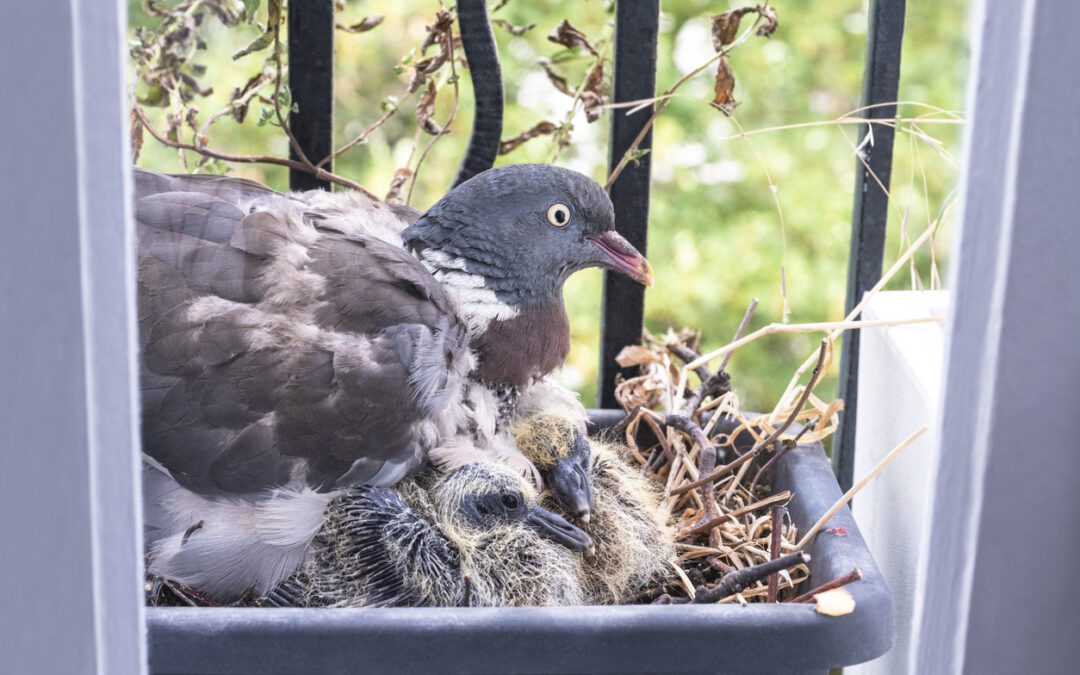
by Pigeon Patrol | Sep 25, 2024 | Bird Netting, Pigeon Droppings, Pigeon Predators, Pigeon Spikes
From sidewalks messed with droppings to gutters filled with feathers, birds aren’t always welcome in some public places. As beautiful as they can be individually, a large group of birds gathering atop a building or nesting in air vents can create a danger for themselves and the public.
BirdFlite wires keep large birds from gathering on a building’s ledge. Photos courtesy of Bird Barrier.
Bird Barrier Inc. of Carson, Calif., has developed several ways to keep birds off building ledges and awnings without harming them and with little to no visual impact.
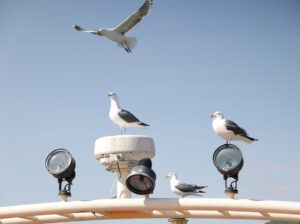
Four gulls observe from a sightseeing cruiser on Toyako, a caldera lake. Spring afternoon in Abuta District.
“You probably won’t even notice them,” says Monique Thorsell, marketing director for Bird Barrier, of the company’s various, and often strange-looking, bird deterrents.
Some of their products — such scarecrow-like screech owl decoys — have been used for years. Others — like the Daddi Long Legs with its many thin, wavy wires — look more like alien technology.
Though Bird Barriers has been around for eight years, Thorsell says some of its experts have been working in bird control for 20 years. “It has grown to be a very hot market in the last seven to eight years,” she said. As more development moves into the suburban areas, birds are finding their old nesting grounds are now covered in pavement. “We’re decreasing their natural habitat,” she says. “There are more conflicts being created.”
In recent years, increasing populations of Canadian Geese have left their mark — and droppings — on public parks and golf courses. Some are concerned the birds will destroy the landscaping and vegetation — others worry about diseases spreading through bird droppings.
In the city, birds create problems when they gather on rooftops where their feathers and droppings get into air vents, either circulating bacteria or causing mechanical problems. “You really want to keep birds off the air intake valves and air conditioning units,” Thorsell says. A lot of times they will clog up gutters, creating standing water that can wear down a roof.
The issue isn’t really with one or two birds hanging out on a ledge outside of the building, she says. “But if you have them in an area around the air conditioning unit or if you have a couple hundred birds on the building, you need to take a look at solving the issue.”
Contractors and homeowners can purchase products on Bird Barriers’ Web site. The company will provide teaching tools on which method will work best for the situation and how to install the product. “We don’t actually do the installs,” she said, but the company has trained more than 15,000 installers across the country.
Different products are recommended for different situations. The StealthNet is made of polyethylene twine and steel installation hardware, so it is difficult for the public to see from even a few feet away. Designed for all bird species and heavy use, the netting is attached to a pre-installed cable system. Though great for keeping birds off rooftops and air conditioning units, the installation of the StealthNet is rather involved.
Another product, Bird-Flite Spikes, comes in one-foot lengths and three different width configurations. The product is designed to keep birds the size of pigeons or larger off ledges, while leaving room for small songbirds. Made of stainless steel and polycarbonate, the base can be easily glued or screwed onto the surface.
Daddi Long Legs
The many wires of the Daddi Long Legs work to deter seagulls from landing on a boat.
The spider-like Daddi Long Legs is made of stainless steel and Delrin plastic. This product is often used on boats, atop streetlights and outdoor shade umbrellas to deter bigger birds from landing. “Not starlings or sparrows,” Thorsell says. “They can actually hang on the wires.”
The cost of installing a bird-deterrent system can vary depending on the product used and the extent of the project. “The homeowner that has a problem on their window ledge could spend $20 to $30,” she said, whereas keeping birds out of airport hangers could cost more than $100,000. “In general, the solution to the problem is anywhere from $500 to $2,500.”
At Seattle’s Key Arena, Bird Barrier products such as the Bird Flight and Bird Shock are used to keep birds away from and out of the building. While Bird Shock does generate an electric shock, Thorsell says it won’t actually harm the birds. “It sends a little conditioning shock, similar to a static-electricity shock,” she says.
In fact, the Humane Society and the Fund for Animals have endorsed Bird Barrier because the company provides non-harmful methods to deter birds. “We have the only completely humane product line in the business,” Thorsell says.
Here’s why some pigeons do backflips
At least five genes are involved in making parlor roller pigeons do backward somersaults
A brownish-red roller pigeon does backward somersaults from left to right across a white background.
Parlor roller pigeons like this one have a movement disorder that prevents them from flying. At least five genes are involved in making the birds do backward somersaults, new research suggests.
These roller pigeons come in two varieties: Flying rollers such as Birmingham rollers, which fly but do long tumbling runs toward the ground before resuming flight, and parlor rollers, which can’t fly but instead backflip along the ground. Many Persian poems say the pigeons perform the acrobatics because the birds are happy, but Samani says the truth is darker. “This is definitely a movement disorder, and it does not have any good aspects to it,” she says. The disorder is progressive, appearing soon after hatching and gradually getting worse until the birds can’t fly.
A smiling young woman, Atoosa Samani, with shoulder-length dark hair holds a small green bird with a yellow belly in her right hand. She is wearing a maroon coat and dark mauve stocking cap.
In addition to studying pigeon genetics, Atoosa Samani, pictured here holding a Wilson’s warbler, also volunteers with a bird banding group and enjoys bird watching. “I love birds,” she says. But she confesses that pigeons are her favorites.
Courtesy of A. Samani
Her colleagues confirmed backflipping is a recessive trait by breeding racing homer pigeons with parlor rollers; none of the hybrid offspring rolled. When hybrid birds were bred together, about 4 out of 10 of the offspring did somersaults when forced to fly, Samani said at the conference.
Samani used two different statistical methods to locate genes that make the pigeons tip tailfeather over teakettle. She found five large stretches of DNA containing hundreds of genes. But none of the genes in those areas had mutations that could account for the tumbling.
So she looked at gene activity in the birds’ brains and found nearly 2,000 genes that become either more or less active in the brains of parlor rollers than in two breeds of nonrolling pigeons.
Pigeon Patrol
Pigeon Patrol Products & Services is the leading manufacturer and distributor of bird deterrent (control) products in Canada. Pigeon Patrol products have solved pest bird problems in industrial, commercial, and residential settings since 2000, by using safe and humane bird deterrents with only bird and animal -friendly solutions. At Pigeon Patrol, we manufacture and offer a variety of bird deterrents, ranging from Ultra-flex Bird Spikes with UV protection, Bird Netting, 4-S Bird Gel and the best Ultrasonic and audible sound devices on the market today.
Canada’s top wholesaler for bird deterrent products for twelve consecutive years.
Contact us at 1- 877– 4– NO-BIRD, (604) 585-9279 or visit our website at https://www.pigeonpatrol.ca/
Bird Gone, Pigeon Gone, Pigeon problems, pigeon spikes, 1-877-4NO-BIRD, 4-S Gel, Bird Control, Pigeon Control, bird repellent, Bird Spikes, sonic bird repellent, stainless steel bird spikes, bird spikes Vancouver, Ultra Sonic Bird Control, Bird Netting, Plastic Bird Spikes, Canada bird spike deterrents, Pigeon Pests, B Gone Pigeon, Pigeon Patrol, pest controller, pest control operator, pest control technician, Pigeon Control Products, humane pigeon spikes, pigeon deterrents, pigeon traps, Pigeon repellents, Sound & Laser Deterrents, wildlife control, raccoon, skunk, squirrel deterrent, De-Fence Spikes, Dragons Den, Pigeon, Pigeon Patrol, Pigeons Roosting, Vancouver Pigeon Control, Bird Spikes, Bird Control, Bird Deterrent, Pigeon Deterrent, Surrey Pigeon Control, Pest, Seagull deterrent Vancouver Pigeon Blog, Birds Inside Home De-fence, Pigeon Nesting, Bird Droppings, Pigeon Dropping, woodpecker control, Keep The Birds Away, Birds/rats, seagull, pigeon, woodpecker, dove, sparrow, pidgeon control, pidgeon problem, pidgeon control, flying rats, pigeon Problems, bird netting, bird gel, bird spray, bird nails, bird guard, Pigeon control, Bird deterrents, Pigeon deterrents, Bird control, solutions, Pigeon prevention, Pigeon repellent, Bird proofing, Pest bird management, Pigeon spikes, Bird netting, Humane bird control, Bird exclusion, Urban bird control, Anti-roosting devices, Pigeon removal, Bird barriers

by Pigeon Patrol | Sep 25, 2024 | Bird Deterrent Products, Bird Netting, Pigeon Control, Pigeon Droppings, Pigeon Patrol's Services, Pigeon Predators
There are at least two potential consumer uses for lasers outdoors, pointing out stars in the sky and dispersing birds. This page discusses tips for deterring and dispersing birds.
Summary
LaserPointerSafety.com does not recommend that ordinary consumers use lasers to scare away unwanted birds. The right type of laser with a wide, low-powered beam is not readily available so there are too many potential safety problems for the birds, for the laser user, and for bystanders.
Also, there is a chance of accidentally having the beam be on or near an aircraft; this is illegal in many countries and jurisdictions. Finally, some species of birds may be only temporarily repelled by lasers; after a few minutes or within a day, studies indicate they will return.
Bird deterrence and dispersal
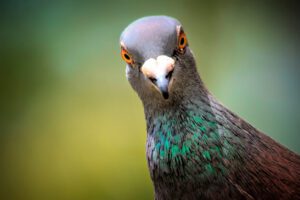
Domestic Pigeon looking at camera
Some consumers have asked about using lasers for bird dispersal.
A September 2003 U.S. Department of Agriculture publication, “Use of Lasers in Avian Dispersal” (available here or here) says that lasers are “safe and effective species-specific alternatives to pyrotechnics, shotguns, and other traditional avian dispersal tools.” A key phrase is “species-specific”. For example, a 2002 USDA study of crows (listed below) concluded that lasers do not work for more than a few minutes of dispersal, and are therefore not recommended for crows.
LaserPointerSafety.com believes there is a difference between serious, professional use, and consumers ordering possibly over-powered lasers off the Internet and simply waving them into trees and the sky. This is especially true in today’s environment where authorities are very sensitive to lasers being aimed into the air by ordinary citizens.
Our recommendation is that consumers should not use lasers against birds, especially Class 3B and Class 4 lasers (output power of 5 milliwatts or above). If a person feels they must try this, it should be done very carefully, with continuous monitoring of the sky so that aircraft are not accidentally targeted.
Pigeon Patrol
Pigeon Patrol Products & Services is the leading manufacturer and distributor of bird deterrent (control) products in Canada. Pigeon Patrol products have solved pest bird problems in industrial, commercial, and residential settings since 2000, by using safe and humane bird deterrents with only bird and animal -friendly solutions. At Pigeon Patrol, we manufacture and offer a variety of bird deterrents, ranging from Ultra-flex Bird Spikes with UV protection, Bird Netting, 4-S Bird Gel and the best Ultrasonic and audible sound devices on the market today.
Canada’s top wholesaler for bird deterrent products for twelve consecutive years.
Contact us at 1- 877– 4– NO-BIRD, (604) 585-9279 or visit our website at https://www.pigeonpatrol.ca/
Bird Gone, Pigeon Gone, Pigeon problems, pigeon spikes, 1-877-4NO-BIRD, 4-S Gel, Bird Control, Pigeon Control, bird repellent, Bird Spikes, sonic bird repellent, stainless steel bird spikes, bird spikes Vancouver, Ultra Sonic Bird Control, Bird Netting, Plastic Bird Spikes, Canada bird spike deterrents, Pigeon Pests, B Gone Pigeon, Pigeon Patrol, pest controller, pest control operator, pest control technician, Pigeon Control Products, humane pigeon spikes, pigeon deterrents, pigeon traps, Pigeon repellents, Sound & Laser Deterrents, wildlife control, raccoon, skunk, squirrel deterrent, De-Fence Spikes, Dragons Den, Pigeon, Pigeon Patrol, Pigeons Roosting, Vancouver Pigeon Control, Bird Spikes, Bird Control, Bird Deterrent, Pigeon Deterrent, Surrey Pigeon Control, Pest, Seagull deterrent Vancouver Pigeon Blog, Birds Inside Home De-fence, Pigeon Nesting, Bird Droppings, Pigeon Dropping, woodpecker control, Keep The Birds Away, Birds/rats, seagull, pigeon, woodpecker, dove, sparrow, pidgeon control, pidgeon problem, pidgeon control, flying rats, pigeon Problems, bird netting, bird gel, bird spray, bird nails, bird guard, Pigeon control, Bird deterrents, Pigeon deterrents, Bird control, solutions, Pigeon prevention, Pigeon repellent, Bird proofing, Pest bird management, Pigeon spikes, Bird netting, Humane bird control, Bird exclusion, Urban bird control, Anti-roosting devices, Pigeon removal, Bird barriers

by Pigeon Patrol | Sep 19, 2024 | Doves, history of pigeons, MBCA, pet bird, Pigeon Control, Pigeon Droppings, Pigeon Patrol's Services
A couple out for a walk in eastern France have discovered a tiny capsule containing a message despatched by a Prussian soldier over a century ago using a carrier pigeon.
The message from an infantry soldier based at Ingersheim, written in German in a barely legible hand, detailed military manoeuvres apparently during the first world war and was addressed to a superior officer, said Dominique Jardy, curator of the Linge Museum at Orbey in eastern France.
The date is marked 16 July but the year is not perfectly clear, appearing to be written as either 1916 or 1910. The first world war took place from 1914 to 1918.
The message reads: “Platoon Potthof receives fire as they reach the western border of the parade ground, platoon Potthof takes up fire and retreats after a while.
“In Fechtwald half a platoon was disabled. Platoon Potthof retreats with heavy losses.”
At the time, Ingersheim – now in France’s Grand Est department – was part of Germany.
A couple found the tiny capsule with its well-preserved contents in September this year in a field in Ingersheim, said Jardy, who raved about the “super rare” discovery.
They brought it to the nearest museum, the one at Orbey dedicated to one of the bloodiest battles of the first world war.
Jardy had enlisted the help of a German friend to decrypt the message, he said.
The tiny piece of paper and capsule will become part of the museum’s permanent display.
Source
Pigeon Patrol
Pigeon Patrol Products & Services is the leading manufacturer and distributor of bird deterrent (control) products in Canada. Pigeon Patrol products have solved pest bird problems in industrial, commercial, and residential settings since 2000, by using safe and humane bird deterrents with only bird and animal -friendly solutions. At Pigeon Patrol, we manufacture and offer a variety of bird deterrents, ranging from Ultra-flex Bird Spikes with UV protection, Bird Netting, 4-S Bird Gel and the best Ultrasonic and audible sound devices on the market today.
Canada’s top wholesaler for bird deterrent products for twelve consecutive years.
Contact us at 1- 877– 4– NO-BIRD, (604) 585-9279 or visit our website at https://www.pigeonpatrol.ca/
Bird Gone, Pigeon Gone, Pigeon problems, pigeon spikes, 1-877-4NO-BIRD, 4-S Gel, Bird Control, Pigeon Control, bird repellent, Bird Spikes, sonic bird repellent, stainless steel bird spikes, bird spikes Vancouver, Ultra Sonic Bird Control, Bird Netting, Plastic Bird Spikes, Canada bird spike deterrents, Pigeon Pests, B Gone Pigeon, Pigeon Patrol, pest controller, pest control operator, pest control technician, Pigeon Control Products, humane pigeon spikes, pigeon deterrents, pigeon traps, Pigeon repellents, Sound & Laser Deterrents, wildlife control, raccoon, skunk, squirrel deterrent, De-Fence Spikes, Dragons Den, Pigeon, Pigeon Patrol, Pigeons Roosting, Vancouver Pigeon Control, Bird Spikes, Bird Control, Bird Deterrent, Pigeon Deterrent, Surrey Pigeon Control, Pest, Seagull deterrent Vancouver Pigeon Blog, Birds Inside Home De-fence, Pigeon Nesting, Bird Droppings, Pigeon Dropping, woodpecker control, Keep The Birds Away, Birds/rats, seagull, pigeon, woodpecker, dove, sparrow, pidgeon control, pidgeon problem, pidgeon control, flying rats, pigeon Problems, bird netting, bird gel, bird spray, bird nails, bird guard, Pigeon control, Bird deterrents, Pigeon deterrents, Bird control, solutions, Pigeon prevention, Pigeon repellent, Bird proofing, Pest bird management, Pigeon spikes, Bird netting, Humane bird control, Bird exclusion, Urban bird control, Anti-roosting devices, Pigeon removal, Bird barriers












